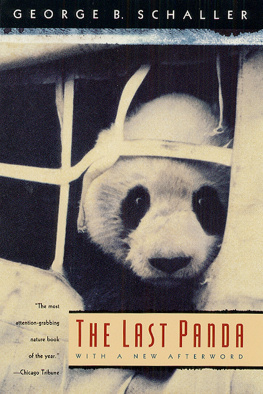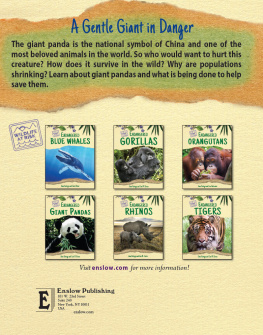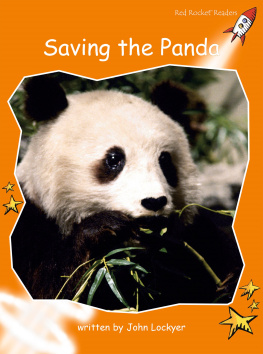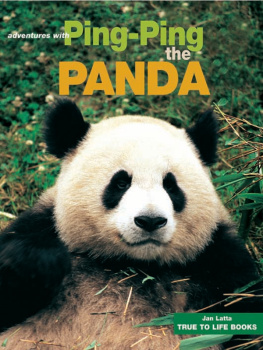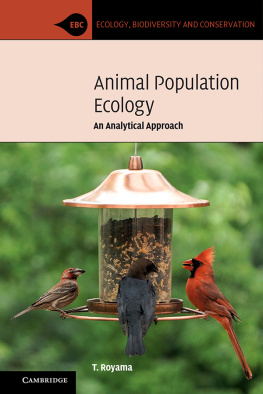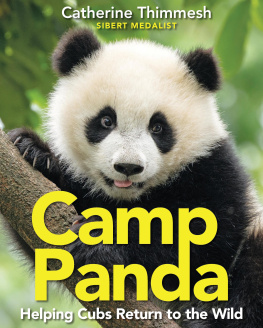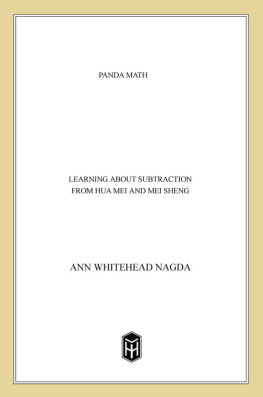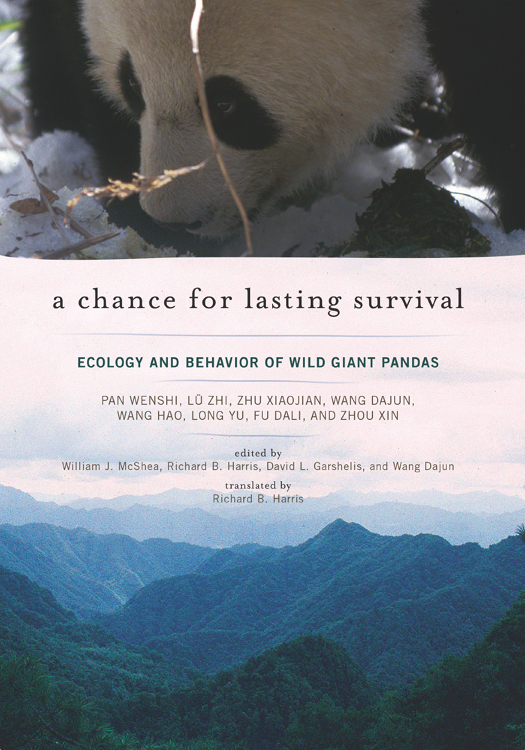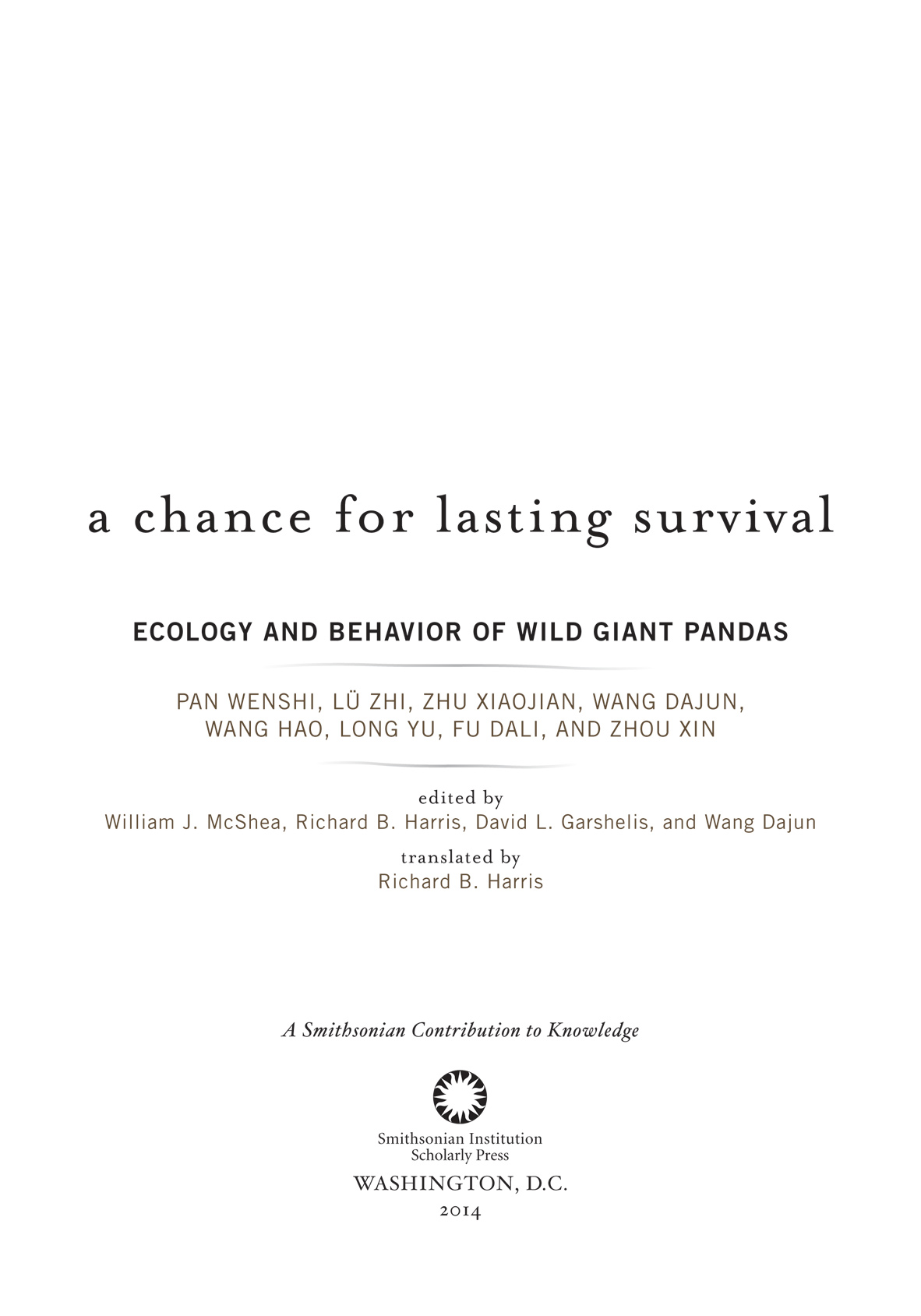Translation copyright 2014 by Smithsonian Institution. The Chinese edition is originally published by Peking University Press, Ltd. This translation is published by arrangement with Peking University Press, Ltd., Beijing, China.
Pan, Wenshi.
[Ji xu sheng cun de ji hui. English]
A chance for lasting survival : ecology and behavior of wild giant pandas / Pan Wenshi, Lu Zhi, Zhu Xiaojian, Wang Dajun, Wang Hao, Long Yu, Fu Dali, and Zhou Xin; edited by William J. McShea, Richard B. Harris, David Garshelis, and Wang Dajun; translated by Richard B. Harris.
pages cm. (A Smithsonian contribution to knowledge)
Includes bibliographical references.
ISBN 978-1-935623-17-5 (cloth : alk. paper) ISBN 978-1-935623-30-4 (ebook) 1. Giant pandaChinaQinling Mountains. I. Title.
QL737.C27P342613 2014
599.789dc23
Contents
Foreword to the English Translation
Pan Wenshi
Foreword to the Chinese Edition
Pan Wenshi
Preface to the Chinese Edition
Pan Wenshi
Introduction The Qinling Panda Research Project: Its Context and Importance
Richard B. Harris, David L. Garshelis, William J. McShea, and Wang Dajun
Postscript The People of the Qinling Study
Wang Dajun
*The original chapter 10, Genetic Diversity of Giant Panda Populations, has been omitted from this translation. See .
Foreword to the English Translation
I n 2001, soon after the original Chinese edition of A Chance for Lasting Survival was published, Kathryn S. Fuller, J.D., who was president of World Wildlife Fund (WWF) United States at the time, visited Peking University and told me that she wanted to translate the book into English. But I chose not to follow her suggestion because it was not yet possible to judge the effects that our actions in Qinlinghalting logging and establishing a nature reserve in this montane-subalpine regionwould have on the areas natural landscape and human society.
In April of 2011, 15 years after bidding farewell to Qinling, I returned to Xinglongling, where I had focused my giant panda research efforts. On that visit, I coincidentally ran into Dr. William McShea, who was investigating the areas biodiversity. This time, when Dr. McShea proposed an English edition of A Chance for Lasting Survival, not only did I immediately agree, I asked him to plan the project and do everything in his power to make it happen.
The timing could not be better for the publication of this English edition. Logging has been halted for a full 17 years, and Xinglonglings natural environment has had this period of time to recover. We can now see what has become of Xinglonglings inhabitants, including its humans, over the last 17 years, and we are finally able to more objectively evaluate the success of this conservation endeavor.
On a snowy day in 1984, I led a scientific team from Peking University into Xinglongling, the hinterland located between the western section of northern Qinlings southern slope and the western section of middle Qinlings northern slope. From the beginning, we viewed the protection of Qinlings giant pandas and all of the broadleaf forest, mixed broadleaf-conifer forest, and conifer forest ecosystems within this montane-subalpine region as an integral part of the global environmental protection effort. Over the last 28 years, we have continuously monitored developments in Qinling. On the worldwide stage of nature conservation, I believe that Qinling presents an important case for reference. With this conviction in mind, I have divided the recent natural history of Qinling into three phases.
Phase 1: Halting the Destruction of Xinglonglings Biodiversity and Establishing the Changqing National Nature Reserve
Early on, we made a crucial discovery: at an altitude of 3,071 m above sea level on the southern slope of Xinglongling lies the most biodiverse area in the Qinling mountain range, providing a refuge for many unique species, including the giant panda (Ailuropoda melanoleuca), takin (Budorcas taxicolor), golden snub-nosed monkey (Rhinopithecus roxellanae), and crested ibis (Nipponia nippon). These creatures depend on their intrinsic reproductive abilities and the natural environment of Xinglongling for their continued survival. In the last decade of the last century, however, this areas natural environment fell into critical danger. In 1991, the local Changqing Forestry Bureau extended a logging road up to an altitude of 2,800 m. This road opened the way for logging a pure primary-growth forest of Taibai larch (Larix chinensis), a rare tree species that grows endemically in Qinlings subalpine zone.
In October of 1993, I personally witnessed the wanton decimation of this forest that had grown since the end of the last ice age. We realized that because mankinds activities had created this ecological crisis, only mankind had the power to end it. After the failure of repeated attempts to stop the logging, we finally appealed to Chinas central government for authoritative political and financial support to protect this land. Losing little time, the central government halted the logging of Xinglonglings forests in July of 1994 and established the Changqing National Nature Reserve in 1995. The creation of this reserve was the most crucial step in the struggle to preserve Qinlings natural environment.
However, the total land area of Changqing National Nature Reserve was only 300 km2; even including the adjoining Foping Nature Reserve, the combined land area totaled only 600 km2. Furthermore, these reserves were a mere speck surrounded on all sides by extensive swathes of logging and agricultural cultivation.
From the perspective of species conservation, such a minuscule ecological island cannot ensure the survival of its inhabitants. Logging continued unabated in other portions of Qinling, creating a geographically fragmented habitat. Because of the obstruction of healthy genetic flow, species in such a habitat inexorably head down the path toward extinction.
Phase 2: Xinglonglings Recovery and Significant Increases in Protected Land Area
In fall of 1995, although logging had, in fact, ceased in Xinglongling, the mountainsides I observed were scenes of utter devastation. I could not imagine how this seemingly ruined piece of land would be able to pull its scarred, weary body into a phase of postdisaster recovery.
However, the events that followed were much more fortuitous than I had imagined. In the years following the establishment of the Changqing National Nature Reserve, Qinling received serendipitous boosts from the Chinese governments environmental undertakings, including the Natural Forest Protection Program and the Conversion of Cropland into Forest Policy. One after another, new reserves were established in the area, expanding the protected panda habitat outward from Xinglongling to 2,0003,000 km2 of nearby land. It was during this time that Xinglonglings biodiversity entered a recovery phase.


